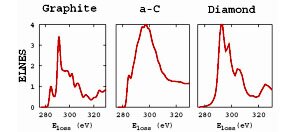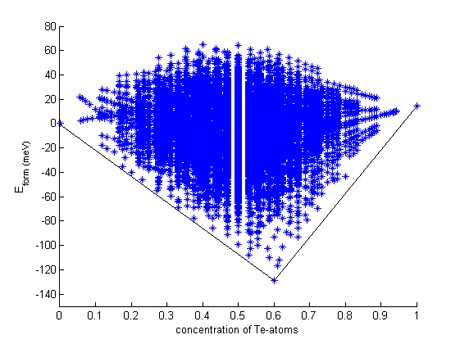Computational modeling of materials
First-principles electronic structure calculations provide detailed insight into the structural, electronic, optical and magnetic properties of materials by using only the atomic number and the fundamental constants of physics as input.
We use density functional theory (DFT) for the characterization of the structural and mechanical properties of materials and state-of-the-art many-body theory for the electronic (GW approximation) and optical properties (GW approximation and Bethe-Salpeter equation).
In particular we study :
(1) the effect of doping and defects on the electronic properties of semiconductors and insulators (transparent conducing oxides, photovoltaic cells, ...) .
(2) phase stability of alloys.
(3) electron energy loss and optical spectra of materials.
In the first example we present the K-edge of carbon for the electron energy loss near edge structure (ELNES) of graphite , diamond and amorphous carbon, from which the sp2/sp3 ratio of amorphous carbon can be obtained.

The second example (bottom right figure) shows the formation energy of ~104 structures for the Sb1-xTex alloy: An homologous (meta)stable series (Sb2)n(Sb2Te3)m is found for x < 0.60.
